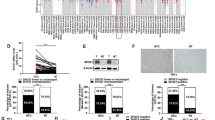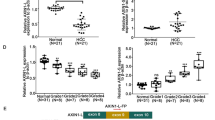Summary
In order to examine the effect of GRIM19 on colon cancer cell SW480, the recombinant adenovirus carrying GRIM19 gene was constructed and transfected into SW480 cells. GRIM19 cDNA was amplified by PCR with the template pcxn2-GRIM19 and cloned into the shuttle plasmid pAdTrack-CMV. The plasmid pAdTrack-CMV-GRIM19 was linearized by PmeI and homologously recombined with bone plasmid pAdEasy-1 in BJ5183, followed by identification by enzyme digestion. After transfection of linearized pAd-GRIM19 with PacI into HEK293 cells, Ad-GRIM19 was obtained and amplified by 3 circles. SW480 cells were infected with Ad-GRIM19. The apoptosis rate was detected by flow cytometry. Agarose electrophoresis revealed the bands of recombinant plasmids identified by enzyme digestion were in the right range corresponding with expectation. Under the fluorescent microscopy, the package of Ad-GRIM19 in HEK293 cells and the expression of Ad-GRIM19 in SW480 cells were observed. The transfection of Ad-GRIM19 into SW480 cells increased the apoptosis rate of SW480 cells as compared with controls. It was concluded that Ad-GRIM19 was successfully constructed and the overexpression of GRIM19 in colon cancer cell lines could promote the apoptotic cell death.
Similar content being viewed by others
References
Bromberg J F, Wrzeszczynska M H, Devgan G et al. STAT3 as an oncogene. Cell, 1999,98:295–303
Bowman T, Garcia R, Turkson J et al. STATs in oncogenesis. Oncogene, 2000,19:2474–2488
Yu H, Jove R. The STATs of cancer—new molecular targets come of age. Nat Rev Cancer, 2004,4:97–105
Lin Q, Lai R, Chirieac L R et al. Constitutive activation of JAK3/STAT3 in colon carcinoma tumors and cell lines. Am J Pathol, 2005,167:969–980
Angell J E, Lindner D J, Shapiro P S et al. Identification of GRIM-19, a novel cell death-regulatory gene induced by the interferon-β and retinoic acid combination, using a genetic approach. J Biol Chem, 2000,275,33 416–33 426
Zhang J, Yang J, Roy S K et al. The cell death regulator GRIM-19 is an inhibitor of signal transducer and activator of transcription 3. Proc Natl Acad Sci USA, 2003,100:9342–9347
Alchanati I, Nallar S C, Sun P et al. A proteomic analysis reveals the loss of expression of the cell death regulatory gene GRIM-19 in human renal cell carcinomas. Oncogene, 2006,25:7138–7147
Zhang X, Huang Q, Yang Z et al. GW112, a novel antiapoptotic protein that promotes tumor growth. Cancer Res, 2004,64:2474–2481
Ma X, Kalakonda S, Srinivasula S M et al. GRIM-19 associates with the serine protease HtrA2 for promoting cell death. Oncogene, 2007,26:4842–4849
Benihoud K, Yeh P, Perricaudet M. Adenovirus vectors for gene delivery. Curr Opin Biotechnol, 1999,10: 440–447
Author information
Authors and Affiliations
Additional information
Shen WANG, male, born in 1983, Postgraduate
This project was supported by a grant from National Natural Sciences Foundation of China (No. 30471673).
Rights and permissions
About this article
Cite this article
Wang, S., Wang, G., Deng, Y. et al. Construction of recombinant adenovirus carrying GRIM19 and its effect on SW480 cells. J. Huazhong Univ. Sci. Technol. [Med. Sci.] 28, 14–16 (2008). https://doi.org/10.1007/s11596-008-0104-y
Received:
Issue Date:
DOI: https://doi.org/10.1007/s11596-008-0104-y




